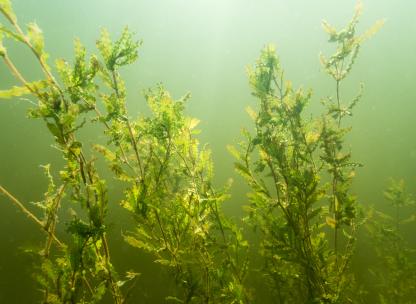News – Sheridan Media


Aquatic Invasive Species, the term is one anyone working or playing in Wyoming’s waters has grown to know well. AIS, specifically zebra and quagga mussels, pose a risk to the ecosystems of Wyoming’s waters. The Wyoming Game and Fish Department’s AIS check stations serve as Wyoming’s gatekeepers to help prevent the invasion of species that pose this very real danger.
Although the mussels are a major concern, other plant and animal species have already invaded some of Wyoming’s waters. The AIS stations also act as prevention to accidental transportation by watercraft users of an invasive species from one body of water to another and it’s not only animal life that can cause a stir in water bodies.
Wyoming Game and Fish Sheridan Region Aquatic Invasive Species Specialist Reed Moore told listeners of Sheridan Media’s Public Pulse that AIS plants pose another threat that boaters should be looking for every time they take their boat out of any body of water.
R. Moore
According to the Game and Fish, curly pondweed is native to Eurasia, Africa and Australia. It was introduced in the United States in the mid-1800s, and is found in almost every state in the continental U.S. It competes with native plants, reduces plant diversity and forms dense mats that impact water-based recreation. The invasive water weed was previously found in Lake Desmet in 2011, in the North Platte River between Seminoe and Pathfinder reservoirs in 2012, Boysen and Keyhole reservoirs in 2013 and in the Shoshone River near Cody in 2014.
Moore asks the public to remove any and all plants from boats as they perform the “Clean, Drain, Dry” method to prevent the spread of any AIS.
To learn more about AIS plant species and how they have impacted the Cowboy State, click here.
Last modified: June 17, 2025






